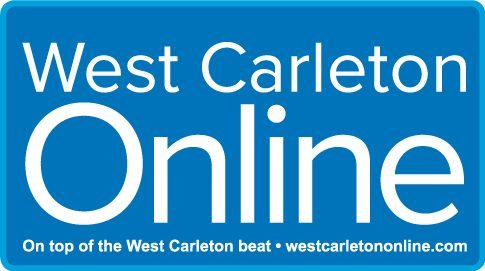Oct. 13 COVID-19 update: City death toll breaks 600, U.S. border set to re-open to Canadian cars
Special to WC Online
OTTAWA – The ongoing COVID-19 pandemic has reached a grim milestone in Ottawa as the city’s death toll breaks the 600 mark.
Ottawa Public Health (OPH) is reporting three new COVID-19-related deaths today (Oct. 13), bringing the local pandemic death toll to 601.
The latest three to die according to OPH, were in their 50s, 60s and 70s. Ottawa’s COVID-19 deaths break down by age group are: one in their 20s; one in their 30s; eight in their 40s; 30 in their 50s; 73 in their 60s; 113 in their 70s; 205 in their 80s; and 170 in their 90s.
The health unit is reporting 24 new cases of COVID-19 in the city Wednesday, Oct. 13. There have been 253 new cases in the last seven days.
Seven Ottawa residents are currently hospitalized by the coronavirus and four of those are in intensive care.
OPH says it is tracking 283 active cases of COVID-19 in the community.
The number of Delta variant cases reported in Ottawa over the last 30 days continues to drop, now at 123.
There are eight ongoing COVID-19 outbreaks at Ottawa schools and one in a local daycare. OPH is also monitoring two community outbreaks stemming from a restaurant and a ‘services’ workplace.
According to OPH’s vaccination dashboard, 85 per cent of all residents over the age of 12 are fully vaccinated against COVID-19 and 89 per cent have had at least one shot.
The rate of infection among Ottawa’s unvaccinated vaccine-eligible population is now 11 times higher than it is for the fully vaccinated population. The local rate of infection per 100,000 residents for those vaccinated against the virus is at 11, whereas the rate for those unvaccinated (or vaccinated with one dose under 14 days) is 125.2. The rate per 100,000 residents for those who are waiting for their second shot is 55.4.
Ontario is reporting 306 cases of COVID-19 and 12 more deaths today. It’s the lowest number of daily new cases since early August. Health Minister Christine Elliott says 202 cases are in people who are not fully vaccinated or have an unknown vaccination status.
Ottawa residents being tested for COVID-19 in Ottawa are seeing positive results 1.7 per cent of the time.
There have been 30,359 confirmed cases of COVID-19 in Ottawa (29,475 resolved) since March of 2020.
U.S. border to open to vaccinated road traffic
CANADA – Fully vaccinated Canadians will be allowed to drive into the United States beginning in early November, President Joe Biden said yesterday (Oct. 12), following 20 months of closure due to the COVID-19 pandemic.
Senior government officials delivered the news in a conference call with reporters on condition they hold their reports until early today (Oct. 13).
“At long last, there is action by the United States to open the doors and welcome back our Canadian neighbours,” congressman Brian Higgins released in a statement prior to the news embargo ending. “Border communities await further details from the administration with great expectation, and I will continue to advocate for a more fully and freely open border to both governments, sooner rather than later.”
Details remained vague, but the plan is designed to dovetail with the administration’s existing plan to allow international travellers from further afar to resume travelling to the U.S. on the same timeline, provided they’ve been fully vaccinated against COVID-19.
“We understand how valuable travel from Canada and Mexico is to the economic activity in border communities and to our broader economy,” one official said. “We also know how meaningful the ability to travel is to maintain the personal ties between people living on either side of the northern and southern U.S. borders, who are often effectively members of one community.”
Non-essential travel to the U.S. by unvaccinated foreign nationals will remain prohibited, officials said. As of early January, even essential travellers who are foreign nationals seeking to enter the U.S. will need to provide proof of vaccination.
Travellers will be considered to be fully vaccinated if they have received a full course of a COVID-19 vaccine approved by either the U.S. Food and Drug Administration or the World Health Organization, which includes Oxford-AstraZeneca, a common vaccine in Canada that never received FDA approval.
The jury is still out on whether travellers who received mixed doses will be eligible, but experts at the U.S. Centers for Disease Control and Prevention are currently working on how to address that issue, the official said.
Higgins, who serves as co-chair of both the Canada-U.S. Interparliamentary Group and the Northern Border Caucus, became a tenacious and vocal critic of the restrictions as soon as the vaccines proved effective and accessible in both countries.
His efforts and those of allies in both countries, some of them mounting concerted media campaigns and lobbying efforts to expand awareness of the extended delay in easing the restrictions, soon resulted in a chorus of prominent U.S. congressional voices exerting pressure on the White House to take action.
“A robust cross-border exchange between the United States and Canada is fundamental to our binational relationship and mutually beneficial to our nations’ citizens, businesses, and economies,” Higgins said.
“Strong vaccination rates in Canada made the continued border shutdown absurd and unjustifiable.”
Fully vaccinated U.S. citizens and permanent residents have been allowed back into Canada since August, provided they have waited at least 14 days since getting a full course of a Health Canada-approved vaccine and can show proof of a recent negative COVID-19 test.
Beginning in early November, the U.S. plans to allow fully vaccinated visitors from a host of countries where stateside travel has long been restricted, including China, India, Ireland, Iran, South Africa, Brazil, and the 26 European countries without border controls, known as the Schengen group.
No specific dates have yet been announced.
Only about 66 per cent of eligible Americans are fully vaccinated against the virus, according to the latest numbers available from the CDC. By comparison, Health Canada says 81 per cent of eligible Canadians 12 or over have had a full course of vaccine.
The decision to re-open the land border ends a 19-month freeze due to the COVID-19 pandemic and is part of a plan to also open the border with Mexico. Vehicle, rail and ferry travel between the U.S. and Canada and Mexico has been largely restricted to essential travel, such as trade, since the earliest days of the pandemic.
Homeland Security Secretary Alejandro Mayorkas was expected to provide more details about the new rules Wednesday.
Both Mexico and Canada have been pressing the U.S. for months to ease restrictions on travel that have separated families and curtailed leisure trips since the onset of the pandemic. The latest move follows last month’s announcement that the U.S. will end country-based travel bans for air travel, and instead require vaccination for foreign nationals seeking to enter by plane.
According to the officials, travellers entering the U.S. by vehicle, rail and ferry will be asked about their vaccination status as part of the standard U.S. Customs and Border Protection admissions process. At officers’ discretion, travellers will have their proof of vaccination verified in a secondary screening process.
Unlike air travel, for which proof of a negative COVID-19 test is required before boarding a flight to enter the U.S., no testing will be required to enter the U.S. by land or sea, provided the travellers meet the vaccination requirement.
The delay in the vaccination requirement for essential cross-border travel is meant to provide truck drivers and others with additional time to get a shot and minimize potential economic disruption from the vaccination mandate, officials said.









